Jacksonville, Fl. — The “Buresh Bottom Line”: Always be prepared!.....First Alert Hurricane Survival Guide... City of Jacksonville Preparedness Guide... Georgia Hurricane Guide.
STAY INFORMED: Get the * FREE * First Alert Weather app
FREE NEWS UPDATES, ALERTS: Action News Jax app for Apple | For Android
WATCH “Preparing for the Storm”
WATCH “The Ins & Outs of Hurricane Season”
READ the First Alert Hurricane Center “Survival Guide”
LISTEN & WATCH “Surviving the Storm” - WOKV Radio & Action News Jax
***** ALWAYS CHECK & RE-CHECK THE LATEST FORECAST & UPDATES! *****
REMEMBER WHEN A TROPICAL STORM OR HURRICANE IS APPROACHING: Taping windows is *NOT* helpful & will not keep glass from breaking.
Realize the forecast cone (”cone of uncertainty”) is the average forecast error over a given time - out to 5 days - & *does not* indicate the width of the storm &/or damage that might occur.
As Jacksonville celebrated its 200th birthday Wed., June 15th, when it comes to weather - the tropics have a tendency to dominate Jacksonville’s history. Read all about it * here * in the “Buresh Blog”... video below:
Tropics:
Weak low pressure continues over the far W. Caribbean near the coast of Central America. The low will bend toward the west/northwest thanks to a persistent & strong upper level high pressure over the Central & Eastern U.S. should steer any possible eventual development to the west or northwest far to the west of Fl. & likely south of the U.S. gulf coast so no impacts for the Lower 48.



Wind shear analysis shows winds out of the west at more than 50 mph! over parts of the Southern Gulf & N. Caribbean:

The location of development of tropical systems in June since 1851 generally favors the NW Caribbean, Gulf of Mexico & far Western Atlantic:



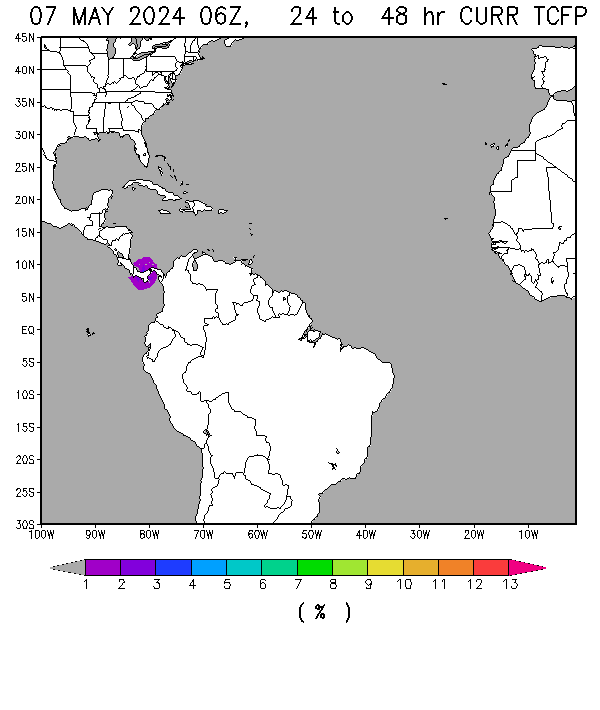
Saharan dust is spread west each year from Africa by the prevailing winds (from east to west over the Atlantic). Dry air - yellow/orange/red/pink. Widespread dust is indicative of dry air that can impede the development of tropical cyclones. However, sometimes “wanna’ be” waves will just wait until they get to the other side of - or away from - the plume then try to develop if other conditions are favorable. In my personal opinion, way too much is made about the presence of Saharan dust & how it relates to tropical cyclones. In any case, we’ve already has a couple of dust plumes spread west to the Caribbean & Gulf with the peak of Saharan dust typically in June & July.
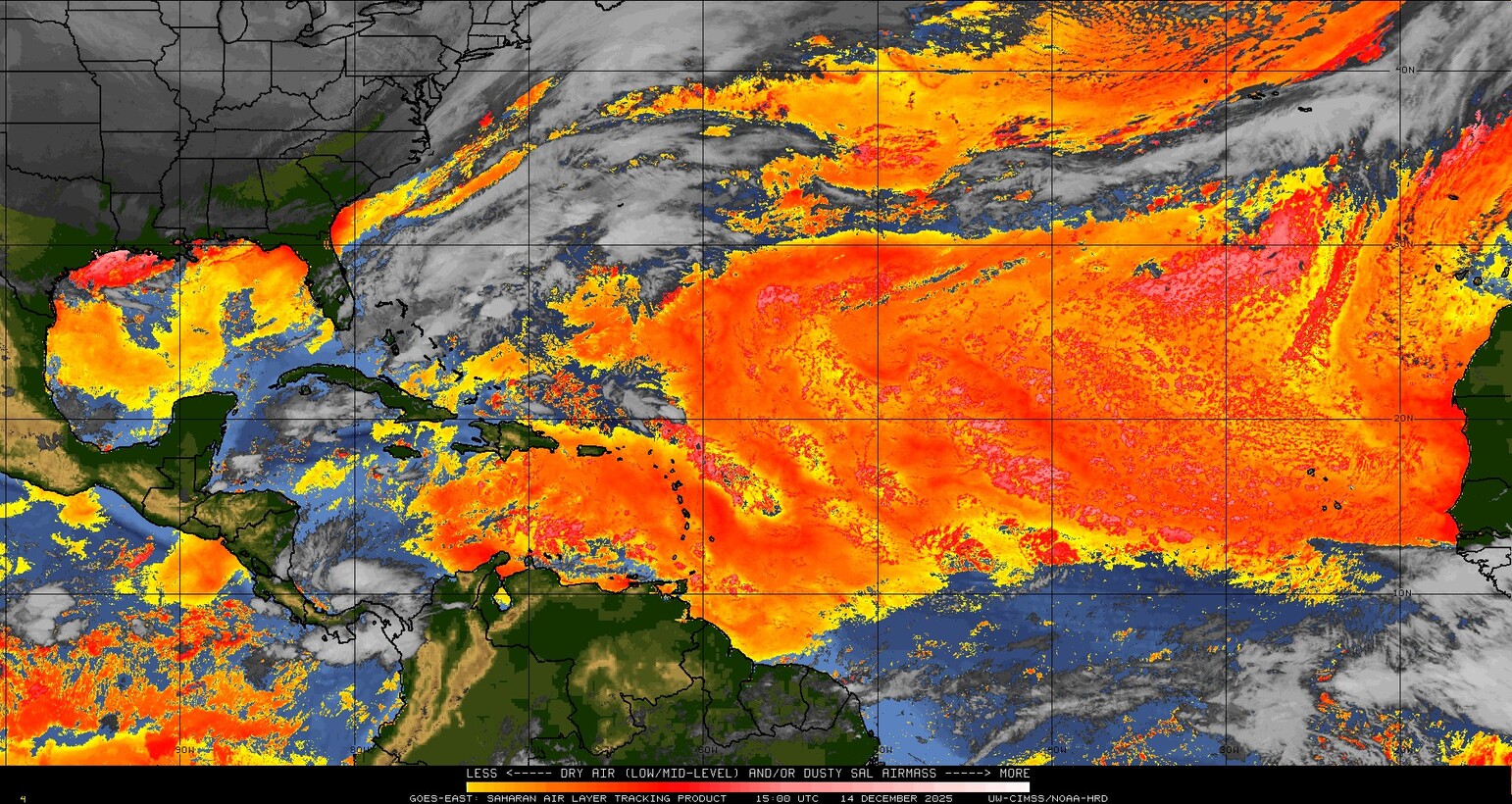
2022 names..... “Alex” was the first name on the Atlantic list (names are picked at random by the World Meteorological Organization... repeat every 6 years... “Bonnie” is next. Historic storms are retired [Florence & Michael in ’18... Dorian in ’19 & Laura, Eta & Iota in ‘20 & Ida in ‘21]). The WMO decided - beginning last year - that the Greek alphabet will be no longer used & instead there will be a supplemental list of names if the first list is exhausted (has only happened three times - 2005, 2020 & 2021). The naming of tropical cyclones began on a consistent basis in 1953. More on the history of naming tropical cyclones * here *.





East Atlantic:





Mid & upper level wind shear (enemy of tropical cyclones) analysis (CIMMS). The red lines indicate strong shear:
Water vapor imagery (dark blue indicates dry air):

Deep oceanic heat content over the Gulf, Caribbean & deep tropical Atlantic:
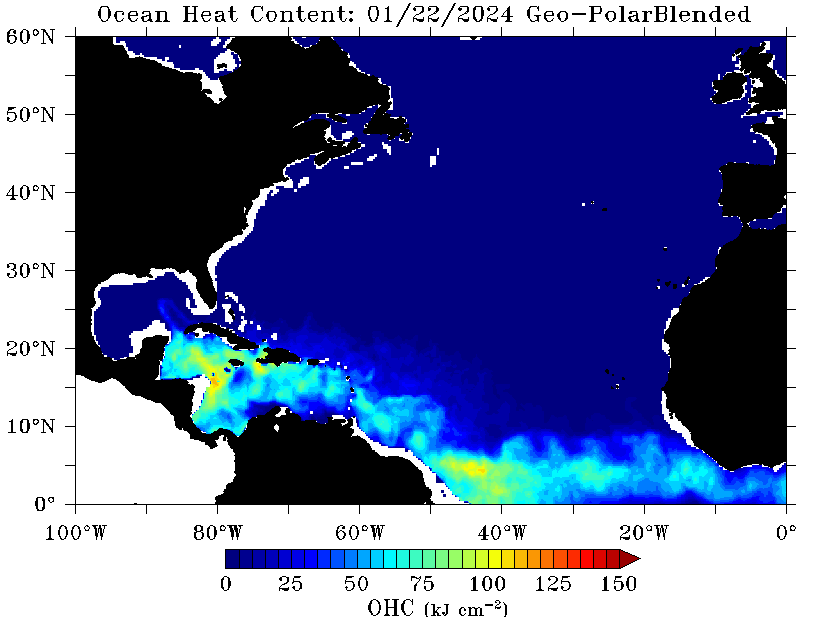
Sea surface temp. anomalies:
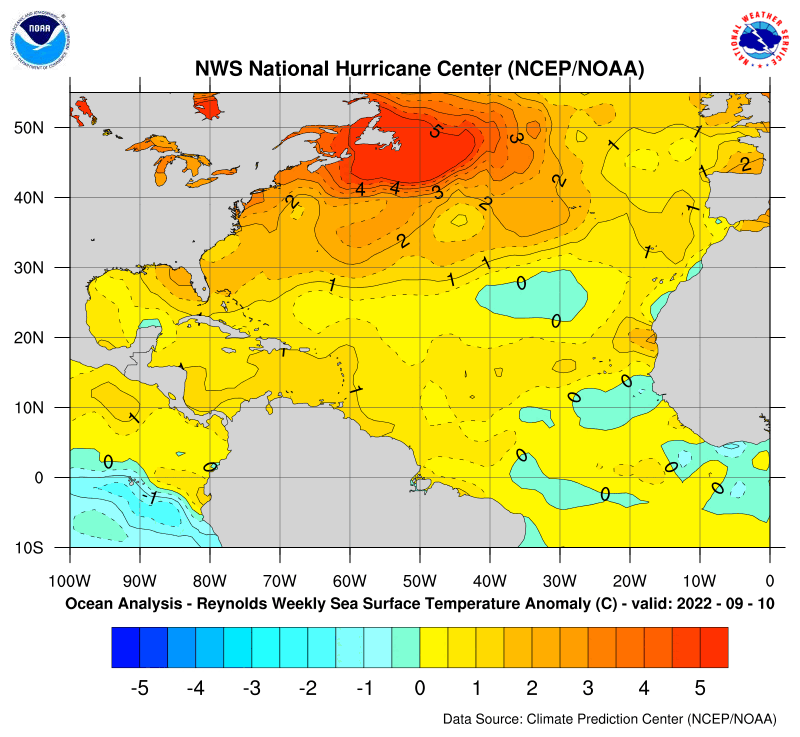

SE U.S. surface map:

Surface analysis centered on the tropical Atlantic:
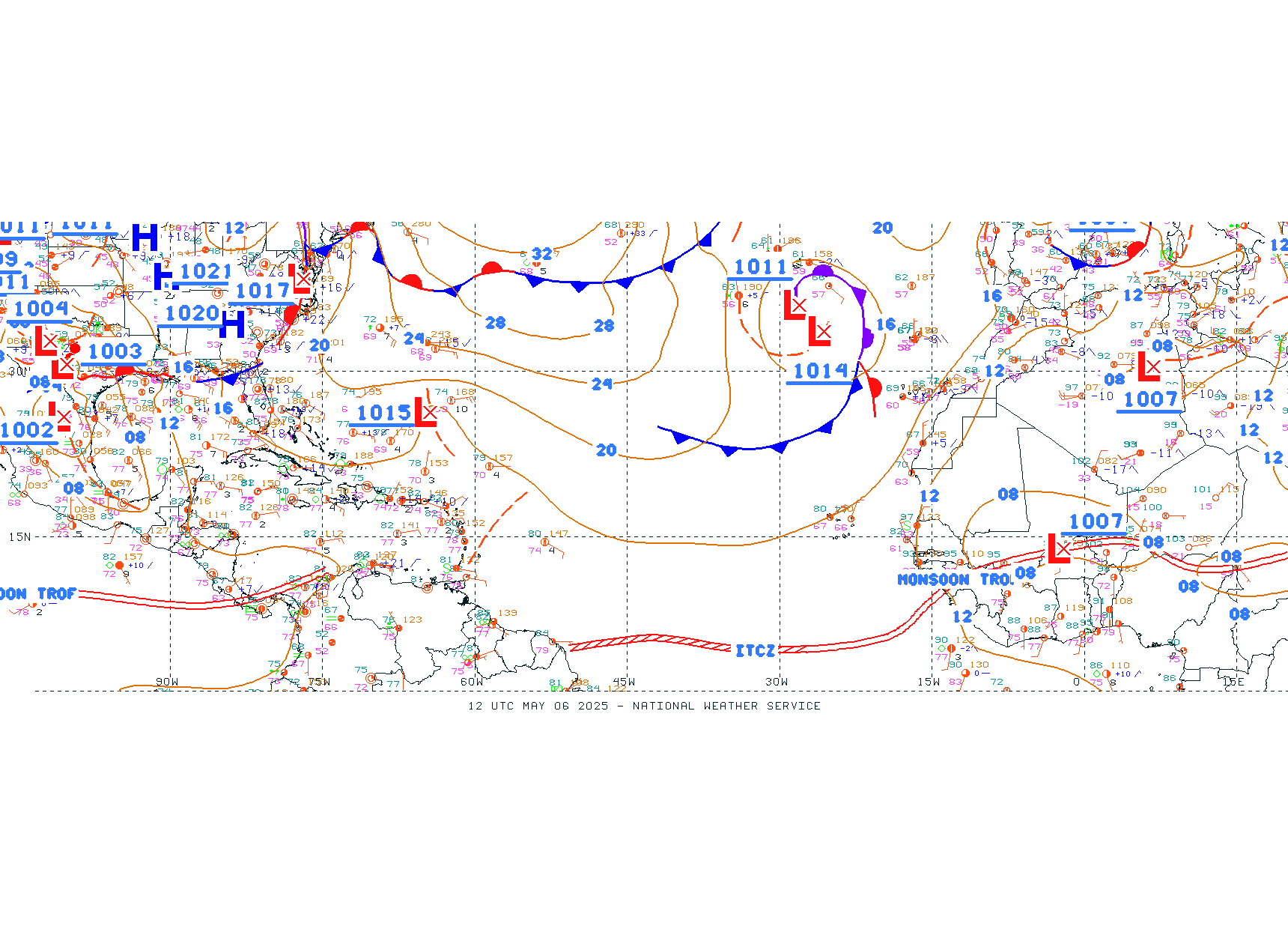
Surface analysis of the Gulf:
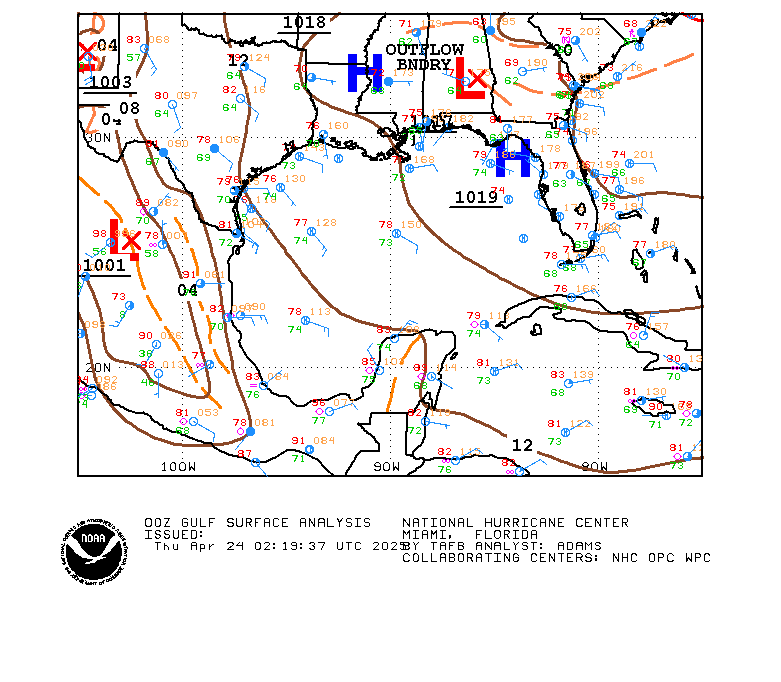
Caribbean:
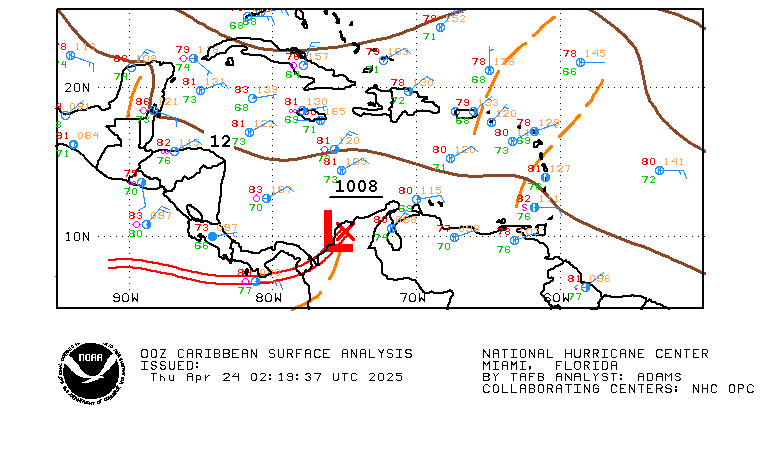
GFS wave forecast at 48 & 72 hours (2 & 3 days):


Atlantic Basin wave period forecast for 24, 48 & 72 hours respectively:
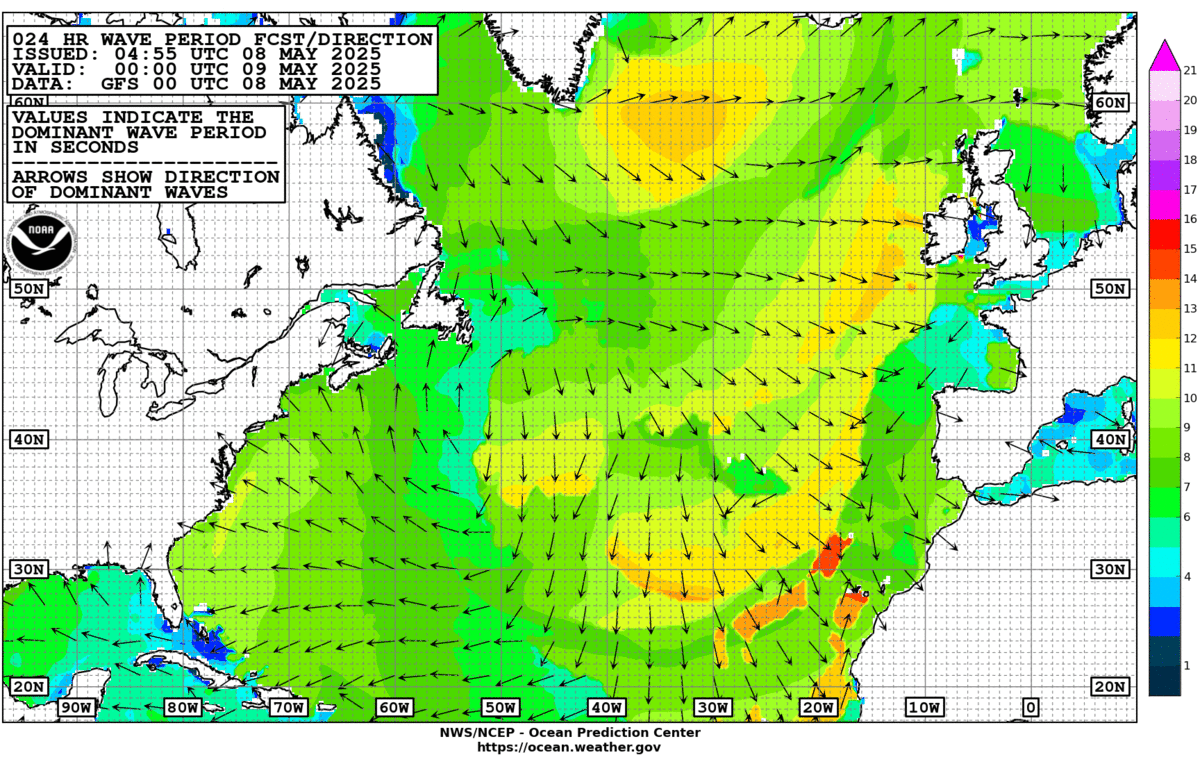
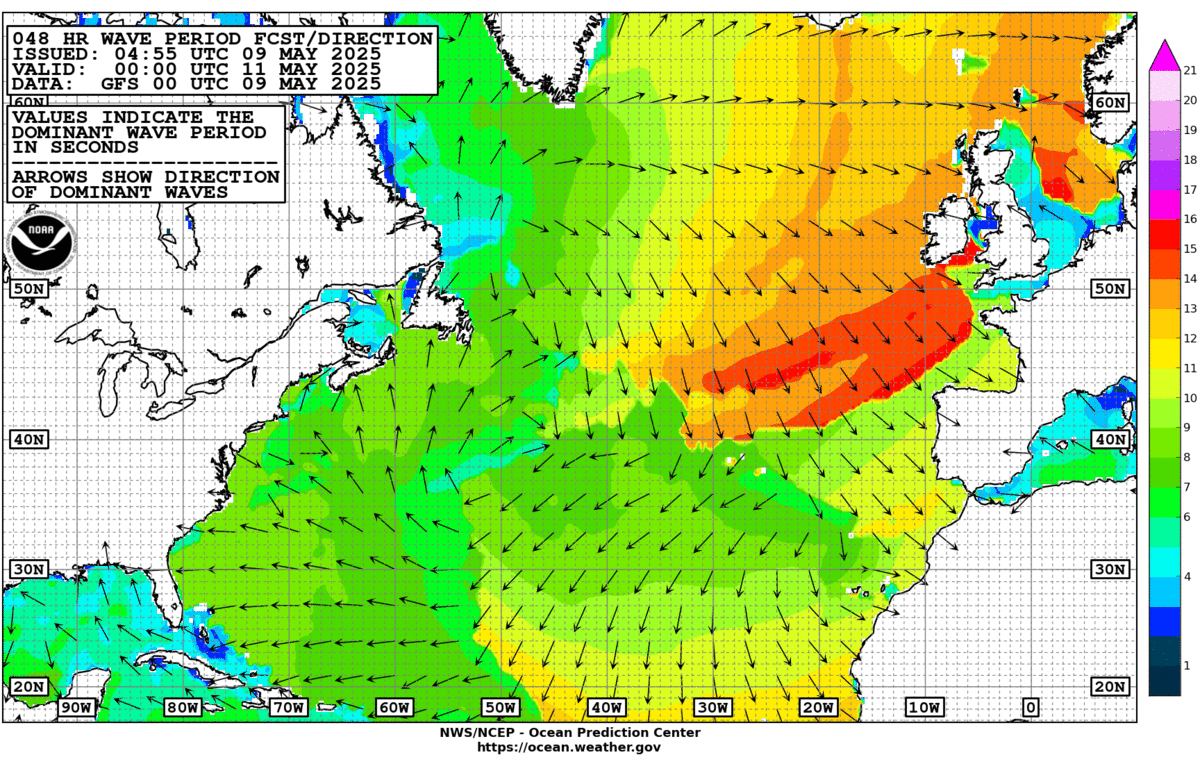
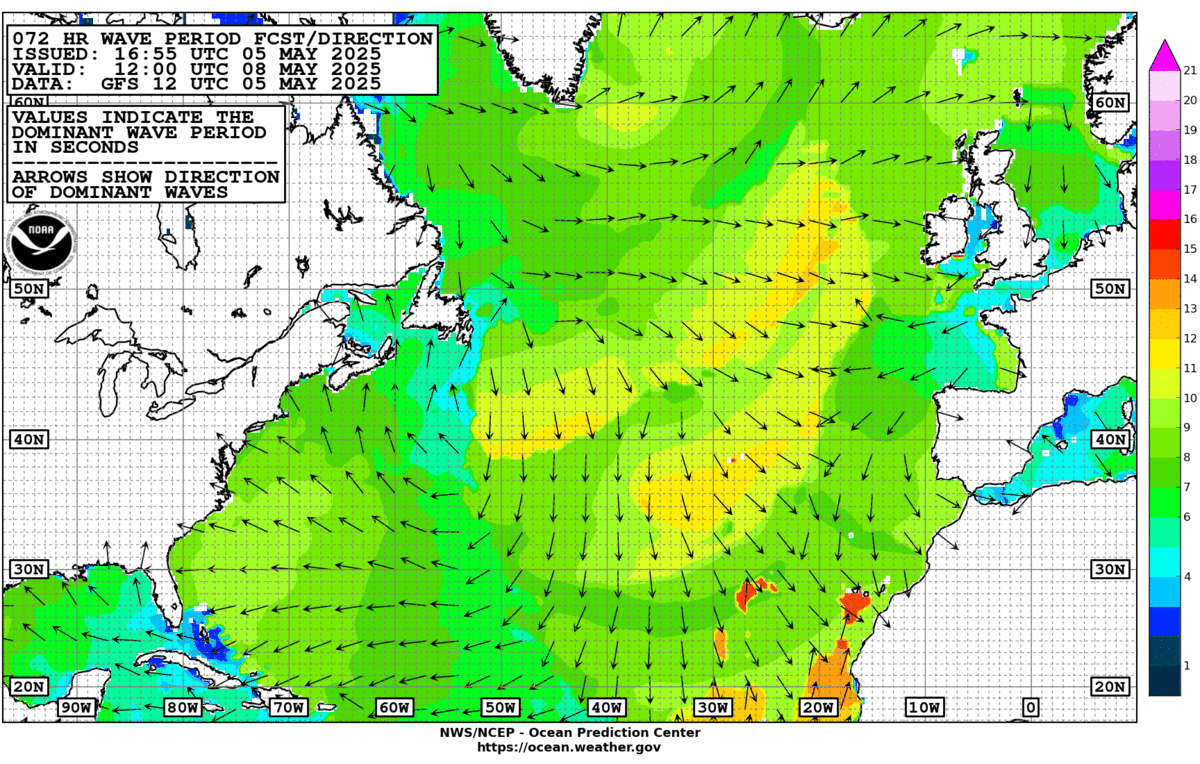
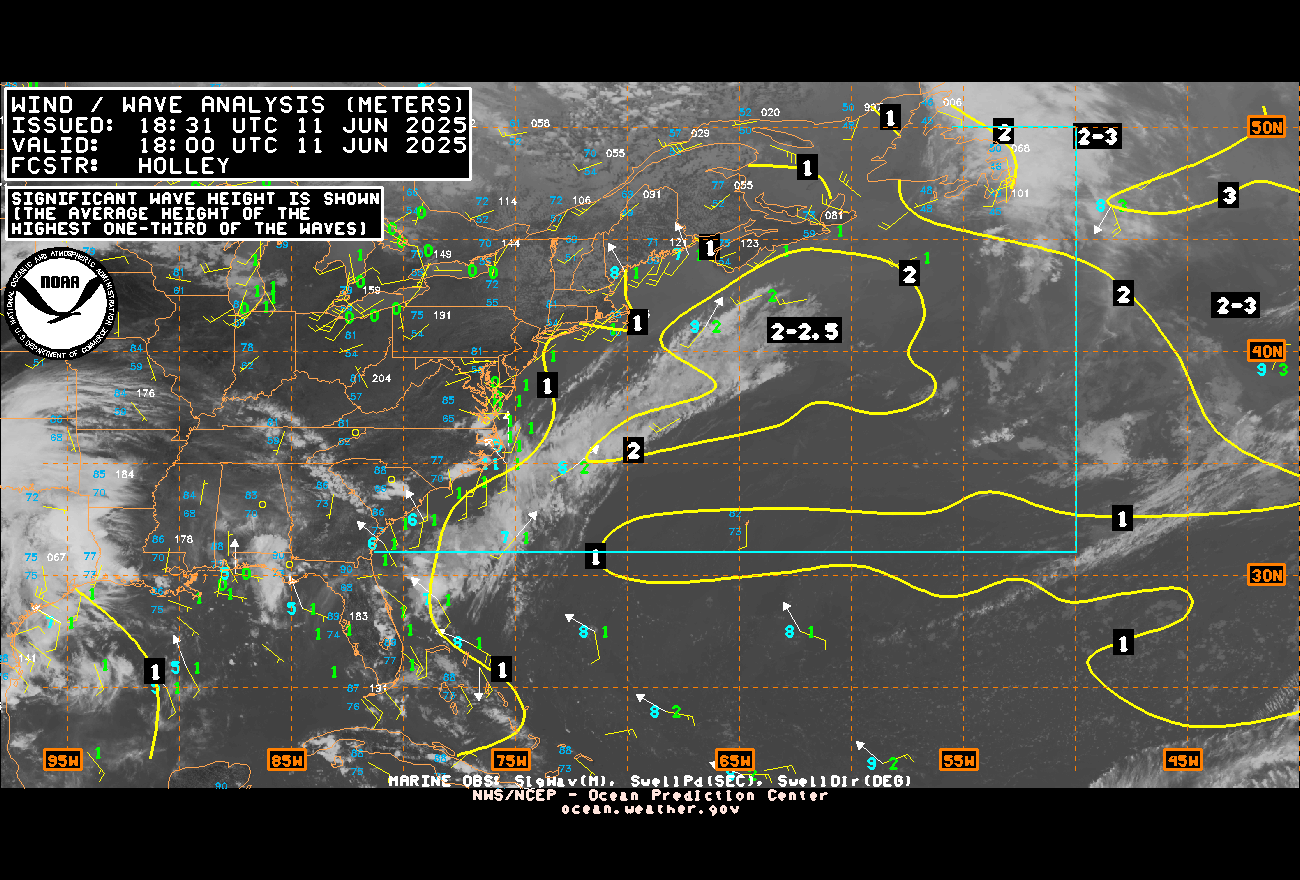
The East Pacific:
“Blas” became a hurricane Wed. over the E. Pacific & will move W/NW away from the mainland of Central America & Mexico with weakening likely to commence soon. The system should dissipate next week over the Pacific.
Another system is developing & will strengthen while moving northward for a short time before turning to the west away from Mexico & Central America.




West Pacific IR satellite:

Global tropical activity:

Cox Media Group













